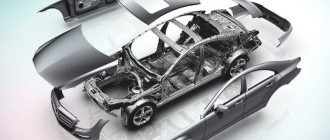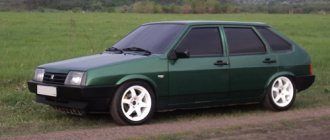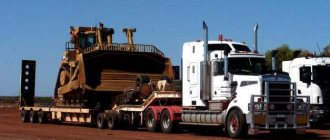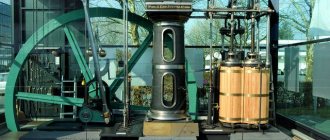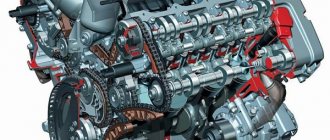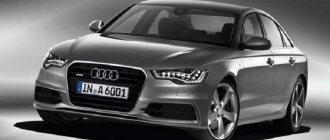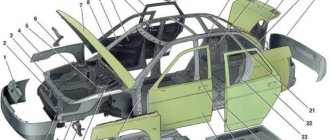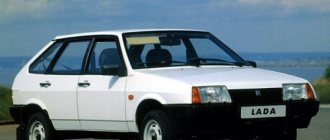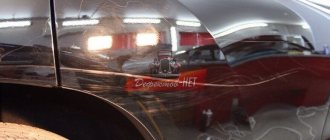Sedan
One of the most popular body types, which in most cases has 2 rows of seats. The sedan initially has a hood, after which the passenger capsule begins, and then the luggage compartment, which is separated from the passenger capsule. The exact date of appearance of the first sedan is unknown, but it is certain that it appeared before 1930.
The sedan can also be divided into several types, but this will all take a long time. Lexus IS is a sedan car.
When form determines content
Having dealt with the general categories, it's time to move on to the body types that modern automakers love most. First, let's talk about popular three-volume machines.
Sedan
Let's start with the classics, with sedans. This type, which has been in great demand among buyers for many, many years, is characterized by the presence of two full rows of seats and four doors. By the way, the roof line should not have a steep slope towards the rear, otherwise it will no longer be quite a sedan, but... a four-door coupe.
Sedan body
Although for a true coupe, having so many doors is a deviation from the rules. Classic representatives of this type of body are equipped with only two; it can also be noted that such cars do not have a very functional rear row of seats.
Coupe body
Cabriolet
If in front of you is a car without a roof, but with four or two doors and quite normal two rows of seats, it is a convertible.
Cabriolet body
Roadster
If there are only two seats in an open car, then such a body is called a roadster. The absence of a roof is only conditional; in fact, it is there, but it is foldable, and both a rag top and a hard one, made of the usual metal, but equipped with a complex mechanism, can be folded.
Roadster
Limousine
A sign of a luxurious life is our next hero. Limousine. It's essentially a sedan, but with a very long wheelbase. In addition, a limousine is characterized by the presence of a partition between the driver and the passenger compartment.
Limousine
Pickup
Another representative of three-volume bodies is a pickup truck. Its main feature is the open cargo compartment. Thanks to its practicality, it has long become a favorite of farmers, builders and entrepreneurs involved in the transportation of small cargo.
Pickup
Hatchback
Let's move on to two-volume cars. And one of their most popular representatives is the hatchback. It can have two, three or five doors, with the odd door at the back providing access to the luggage compartment.
Hatchback
Station wagon
A station wagon has the same number of doors, but, however, compared to a hatchback, its body is much longer. In addition, it also differs in the angle of the rear door glazing, the so-called overhang - in station wagons it is noticeably steeper.
Station wagon
Liftback
Liftbacks also belong to two-volume vehicles. Outwardly, they are very similar to sedans, sometimes it’s almost impossible to distinguish them, but that’s until we open the trunk lid. On liftbacks it opens along with the rear window.
Liftback
SUV and crossover (SUV)
Our story would be incomplete without SUVs and crossovers, which are popular all over the world today. These cars are distinguished by high cross-country ability, although in the latter it is less pronounced. This type of car can have two or even three rows of seats, all-wheel drive, brutal design and high weight are also in order.
SUV
Crossover
Minivan
In conclusion, friends, a few words about single-volume bodies. In addition to the city cars mentioned above, this type includes minivans and compact vans. Because of their spaciousness, these cars are very popular with large families. As a rule, they are equipped with three rows of seats, sometimes equipped with sliding doors.
hatchback
Also one of the most popular body types nowadays. By this type of body we mean a shortened sedan, that is, the luggage compartment is no longer separate from the passenger capsule, but it is located in it. It is also believed that a hatchback is most likely a station wagon, which has a slightly smaller trunk volume, and also a car with a shorter rear overhang.
It is unknown when the first hatchback body appeared. Mazda 2 is a hatchback car.
Bodies with a two-volume layout
The two-volume type of car body is distinguished by the presence of a separate compartment to accommodate the power plant. As for the cargo compartment, it is combined with the interior and is accessed through the rear door. Cars with this type of body can be either three- or five-door.
Station wagon
A station wagon is a car characterized by an increased rear overhang and a constant roof level. There are variations with three and five doors. The main advantage of station wagons is the increased cargo space and the ability to transform into a cargo-passenger version by folding the rear row of seats. The rear door can be solid, opening upwards, or double-leaf, with a side opening.
Hatchback
Hatchback is one of the most popular body styles right now. It differs from the station wagon in having a smaller rear overhang, which affects the volume of the cargo compartment. Manufacturers often place the rear glass at an angle, providing a smooth transition from roof to stern. The rear door, made integral with the glass, in the hatchback is only solid, with an upward opening.
SUV
An SUV is an off-road vehicle with a two-volume layout. Often its body is unloaded, since the frame is used in the design of the load-bearing part. The ancestors of this class are station wagons, so they are largely similar in body design. But it is worth noting that there are different variations of SUVs, so judging only by the layout is not entirely correct. For example, for military purposes such cars are often created with an open body design. Also based on SUVs, pickups are produced that already have a three-volume layout.
Crossover
Crossovers are a relatively “young” class of cars. Essentially, this is a hatchback, but with increased cross-country ability due to increased ground clearance. Unlike an SUV, these cars have a monocoque body.
Liftback
A liftback is a type of car body that combines certain features of two- and three-volume layouts. The fact is that visually a car with such a body has a separate luggage compartment. The peculiarity is that the trunk lid is combined with the rear window (which is why it is called the rear door), which is why when it is opened, access to both the cargo compartment and the interior is simultaneously obtained. In this case, the design of the rear door can be one-piece or composite (you can open only the trunk lid or lift it together with the glass). In general, the liftback is a controversial type of car body, and it is impossible to unambiguously attribute it to any specific layout.
Skoda Octavia station wagon
Hatchback Honda Civic
SUV Ford Expedition
Crossover Jaguar F Pace
Audi S7 Sportback liftback
Station wagon
A type of body that is also very familiar to us and we often see it on the street. This body type is derived from the sedan, but is more similar in appearance to a hatchback. For a sedan, after the end of the passenger capsule, the roof goes down to the trunk, but for a station wagon, the roof continues, and then a sharp descent of the trunk lid begins and that’s it.
The main essence of a station wagon is a large luggage compartment, and this is what is considered its fundamental difference from a sedan. In most cases, these cars are used as family cars, that is, they are normal for passengers and have a large luggage compartment; in general, traveling as a family to the dacha in a car with such a body is just the thing. The popularity of such cars began in the 50s, so that you better understand what we are talking about, the Chery Crosseastar is a station wagon.
Single-volume bodies
Single-volume bodies are characterized by increased space to accommodate passengers and ensure maximum comfort. The main representatives of this category of cars are minivans. Note that single-volume passenger cars are considered only conditionally. By definition, this arrangement implies that there is no separate space for installing the power unit (in fact, the engine is installed in the cabin and separated from the passengers by a small partition).
As for passenger cars belonging to this class, their engine is located in a separate engine compartment, but the shape of the body is made in such a way that the engine compartment is visually combined with the interior. Because of such design features, their layout is often called one and a half volume.
Minivan
A minivan is a type of car body with large overall dimensions, which allows the installation of three rows of seats. The cargo compartment is located in the cabin, behind the seats. Often the design provides for the ability to fold the last row of seats to increase cargo space. It is accessed through the rear door.
Microvan
Microvan is another representative with a single-volume body. Unlike a minivan, its overall dimensions are much smaller, so it uses two rows of seats, but the cars themselves are still high and comfortable for passengers.
Compact van
A compact van is an intermediate option between the first two. It can have either two or three rows of seats. All three types have an enclosed, hard-roof design.
Minivan Mercedes Benz V-class II
Microvan Honda N-WGN
Chevrolet Orlando compact van
Limousine
A limousine is also a body type that is most likely known to everyone. In most cases, the manufacturer does not produce such cars; they are created by separate companies from well-known cars. A limousine is in most cases an extended sedan, but there are often cases when SUVs are also extended.
Due to the fact that the car has a longer wheelbase, the model rides very smoothly, which is why people ride in the back of limousines rather than behind the wheel to enjoy comfort.
Limousines have been around for quite a long time and over the years they have become not only a car used to transport influential people, but also a good purchase for business, since it can be rented out as a wedding car.
Not everyone can afford a car with this type of body, since they cost a lot of money, but there are used versions that can be bought for reasonable money.
What is a body type and its functions
The body is the main frame of the vehicle. The engine, gearbox and other elements are installed in it. Naturally, due to needs, the design often changes. On heavy vehicles, the load-bearing role is played by the frame, on which the body is mounted through rubber cushions. On frame cars, body elements act as a body that covers all important components for the vehicle, and also determines its appearance.
The body type determines most of the car's functions. It seriously affects the taxiing of the vehicle and the volume of interior space. Determines the type of activity of the car, for example, minivans are used to transport a large number of people, sports cars are for fast movement, and sedans perfectly serve as everyday cars.
Coupe
A body that is less common on public roads than a sedan or hatchback is a coupe body. In most cases, cars with this body type are sports cars, but there are also regular coupe cars.
A coupe is a two-door car, or rather a 2-door sedan, but there are still small differences from the sedan and this is the rear overhang, it is slightly different. Many people confuse and call a hatchback with 2 doors a coupe body, but it is not that and this is a mistake of people, but sometimes the manufacturer deliberately makes such a mistake in order to sell.
This body has either one or two rows of seats, and the first car in this body had one row of seats. If the coupe body has two rows of seats, then in order to sit in the back row you need to recline the rear seats, the exception is the Mazda RX-8.
In general, the coupe body really looks attractive and sporty, and buyers are aware of this, and therefore this name is now very often used as a marketing ploy.
Toyota Celica is a coupe car.
Van
This design is characterized by a closed body with a special partition separating the room for transporting goods from the room for the driver. Most cars with this body type have only one row of seats. Often the glass is located in the rear door. The positive characteristics of the configuration of such a car include: sufficient spaciousness, high load capacity and protection of the cargo from any external factors.
The disadvantages include weak structural rigidity, significant fuel consumption and a high center of gravity, due to which it can lead to coups during maneuvers.
In modern vehicle models there are no boundaries between body types. Today, automakers are breaking conventions and mixing up styles. As a result, more dynamic and comfortable cars appear.
Cabriolet
Most people associate this type of body with an expensive car, but in fact, a car in this body can be in the middle price category.
A convertible is a car that has a folding roof and has at least 2 seats. The first convertibles appeared at the beginning of the 19th century and were initially made in France, but after that this type of body became popular all over the world. Now convertibles are produced either with a soft top, which in most cases is black and made of vinyl or canvas. But there are also models that have a hard convertible top made of steel or aluminum; their advantage is that with the lid on, the car looks like a normal one and is not visible in traffic.
The convertible body has various varieties, such as the roadster, phaeton and targa, which have some differences, but in fact are the same convertible.
Mercedes-Benz SLK is a convertible car.
Convertible, roadster
Cars with an open top are purchased in countries with predominantly hot climates, and for cool weather there is an option with a folding roof. Cars with a convertible body have two rows of seats, the second is somewhat narrower, like cars with a coupe body.
The roadster body has a similar design, except that these cars are produced with only one row of seats. Owners of such a car with a folding roof have the opportunity to experience the delights of driving and speed on country roads.
Minivan
A type of car body that has three or more rows of seats and in most cases does not have a hood, or a small hood. Earlier this type of body was also called an all-terrain station wagon, but now these are different concepts.
This type of body is not particularly popular, unlike the previous ones, but is often purchased by some builders and so on. The minivan can accommodate 9 people, and the body type with a large number of seats already belongs to a minibus, which are even more familiar to us.
The minivan also falls into various classifications, but we won’t talk about them.
Chrysler Town & Country is a minivan car.
One-volume body
In this case, the engine, passenger and luggage compartments are combined into an all-metal structure. Most of the buses can be attributed to this type. But, there are several more subtypes of one-volume bodies.
Minivans and compact vans
In this case, the length of the body can reach 4.5 meters. Externally, minivans are similar to minibuses. They are highly comfortable; the car can easily accommodate three rows of seats or a small table. This car can accommodate up to 8 people. For example, a minivan includes the Volkswagen Multivan.
There is also a variety called a compact van. In this case, we are talking about the same minivan, only smaller. These are more maneuverable cars with large capacity. For example, the Opel Zafira was popular for a long time.
Microvans are also sometimes found. But, they are often classified as hatchbacks. The only difference is that this is a one-volume car.
SUV
In fact, it doesn’t really relate to the type of body, but more to the type of car itself, but most people think that this is the type of body. An SUV is larger in size than a crossover in the modern world and it was created to drive in places where the road is only bad. Nowadays, a hobby has emerged such as buying an SUV and improving it in order to subsequently overcome difficult obstacles.
An SUV differs from ordinary cars in that it has a fairly high ground clearance and permanent or intelligent all-wheel drive; the SUV also has various locks and other auxiliary functions to overcome obstacles. This type of body is often called a jeep by ordinary people, but in fact these are completely different things, although the name jeep itself began to be used to refer to a car back in the years of the Second World War.
Mercedes-Benz G is an SUV car.
Three-volume body
In this case, passengers, cargo and the engine are located in separate compartments. That is, the machine is divided into three parts, each of which has free access. This design is considered classic and the most convenient. Most city cars have a three-volume body.
There are several types of such vehicles.
Sedans
The sedan can have two or four doors. But, regardless of this, such cars always have two rows of seats (front and rear). The roof of the sedan's interior is flat, not sloping. This means that its height is the same in all parts. This is convenient for transporting passengers.
There are also extended sedans (L class). There are also so-called town cars. They are sedans in which the roof height is slightly increased.
Another distinctive feature of this type of car is the luggage compartment. It is equipped with a separate door, which, when opened, also does not open the rear row of seats.
For example, the sedan includes Zaporozhets, Volga, Opel Vectra, Volkswagen Polo and many other cars that are seen every day on the city streets.
Coupe
Vehicles of this type are equipped with two elongated doors, and there is only one row of seats in the cabin. There are also 4-seater models, but they differ from two-door sedans in terms of comfort for passengers. Due to the sloping roof, which increases the aerodynamic characteristics of the car, a long trip in the back seat will be very painful. There is very little space in this area.
Healthy! A 4-seat coupe is often called a 2+2. This means that the car can fit two adults and two children.
If a sedan can be called a city or family car, then coupes are intended for those who like to drive. These are expensive sports cars with a more powerful power unit and a lower ground clearance. This improves driving characteristics, but only on high-quality road surfaces.
If we talk about the most popular coupes, then these are the Ford Mustang and Audi A5.
Open top cars
Such cars are more common in countries where hot weather prevails. Such cars have a convertible top or no top at all. There are several subcategories of vehicles with a reclining roof. The most popular of them is the convertible. In this case, the lower part of the car can be like in a coupe (extended doors and two seats) or a sedan (4-seater version). As a rule, the coupe is additionally equipped with a soft folding roof. It will not help protect the car from intruders, but if it starts to rain, it will be a salvation.
Also among convertible cars you can find a phaeton. This body class means that the vehicle is also equipped with a soft roof. But, if in the case of a convertible it is assumed that there is a frame above the cabin, then the phaeton does not have one. That is, this car is even more open. The side windows are removable and can be installed as needed. As a rule, phaetons are used for parades and other public events.
Healthy! The word “phaeton” in a car brand can mean the level of luxury of the vehicle, as well as the fact that the interior is distinguished by more space and increased comfort. For example, such a car includes the Volkswagen Phaeton, which is actually a sedan and does not have any convertible top.
Roadsters are also available with a convertible top. These are two-door cars with a short wheelbase. They have removable glass installed (may be completely absent). If there is no soft roof, then this type of roadster is called a spider. If the model has a rigid arc behind the seats, then it is a targa.
Initially, roadsters were equipped not only with main seats, but also with folding ones. Such chairs are popularly called “mother-in-law’s place.” But today, roadsters are more like sports cars. A striking example is the Lada Revolution.
Pickups
You can distinguish a pickup truck by its large open trunk. It is suitable for bulky cargo, and some even install closed structures on it, turning the car into a motor home.
Pickup trucks were designed for farmers and those who had to travel long distances. They overcome any obstacles, since cars of this type are now created on the basis of SUVs. The pickup truck can have two or four doors. The main distinguishing feature of the car is the space both in the cabin and in the trunk.
In addition, cars of this type are more powerful and are able to move in off-road conditions. But in the city these are pretty useless cars. Just look at a photo of a Nissan Navara or Titan to understand that parking such a car is very difficult.
Limousines
These are executive class cars that are built on an extended sedan base (although modern models are also made on the base of an SUV or any other type of car). A distinctive feature is not only the length of the car, but also the mandatory presence of a partition that separates the driver from the passengers.
The car must have at least 2 rows of seats. Some of the seats can be placed on the sides. They are comfortable sofas. As a rule, celebrities use limousines for a spectacular appearance in public, or such a car can be rented for a special occasion.
Two-volume body
In this case, the passenger compartment is combined with the luggage compartment. The second part of the body is the engine compartment. Thanks to this distribution of zones, the cargo area increases. This is convenient, since you can completely fold down the rear seats and get a very spacious trunk in which you can transport large cargo.
There are several types of two-volume machines.
Station wagon
Vehicles of this type are also called cargo-passenger vehicles. These are universal models that can be used for a variety of purposes. If a station wagon is equipped with 3-5 doors and two rows of comfortable seats, then in this case it is called a combi.
It is in station wagons that the rear seats can be folded to increase the size of the luggage compartment. This is the best option for camping, since by folding out the rear seat you can get two full-fledged sleeping places. That is why at the beginning of the 20th century station wagons were very popular and were bought even more often than sedans.
Healthy! You can also find shooting breaks on sale. These are two-door versions of station wagons, which are distinguished by a straight roof. Such models are developed on the basis of sports cars.
If we talk about the appearance of station wagons, then the prominent representative of this type is the VAZ-2102, Opel Astra, Ford Escort and other models.
Hatchback
This body type is very similar to a station wagon, but it has a roof that is sloped at a greater angle. Hatchbacks also have an impressive trunk. Such cars are convenient for trips with the family to nature or for driving around the city. In addition, hatchbacks are slightly smaller than station wagons, which makes them more convenient when parking. Therefore, such cars are often also called compact cars.
Healthy! A car of this type can be three- or five-door.
Among the domestic representatives of this body, it is worth highlighting the VAZ-2109, and if we talk about more modern foreign cars, today you can often find Kia cee'd on the roads.
Liftback
Essentially, it is a combination of a sedan or coupe (according to external data) and a hatchback (based on design features). In this case, the luggage compartment is opened using a hatch, that is, it folds down along with the rear window. There are removable partitions between the storage compartment and the passenger compartment, which can be removed to transport larger cargo.
This system is implemented in Toyota Yaris, Fiat Stilo and many other cars (including compact cars).
SUVs
In essence, these are the same station wagons, but larger in size and with increased ground clearance. More powerful frames are installed on SUVs, which increases the strength characteristics of the entire body. Such cars are optimal in off-road conditions. Almost all SUVs have powerful engines and all-wheel drive.
Healthy! In common parlance, SUVs are often called jeeps, but in fact, Jeep is an independent brand of car.
There are also SUVs with reduced weight. They have the best driving characteristics. They usually have no body, which is why they are called buggies.
Crossovers
These cars are very similar to SUVs, but they are even lighter. In fact, this is a kind of hybrid of a station wagon and an SUV. The crossover is suitable for both city driving and driving on country roads. It also features higher ground clearance, but does not have a reinforced frame.
If we talk about the most prominent representatives of crossovers, we can mention the Kia Sportage, Volkswagen Tiguan and Toyota RAV4.
Vans
Cars with a body of this type are completely ready for transporting large cargo. But the van cannot be called a completely cargo vehicle. In fact, this is a transitional option from a regular passenger car.
The van is distinguished by a large rear door, which has no windows (often glass is installed only on the sides of the driver and passenger seats). Some cars of this type are produced as specialized ones. For example, there are refrigerated vans for transporting equipment and others.
Ford Transit Custom belongs to this type of car.
Pickup
A body type that is very popular in America, but in our country you can also quite often find cars in this body. A pickup truck is a vehicle that is either a converted passenger car or an SUV. The only difference is that a pickup truck has an open rear cargo area, which means it is open air, but there are types of pickup trucks where the cargo area is covered with a metal roof.
The first pickup truck appeared at the beginning of the last century, and since it was popular in America, it was created there; such automobile companies as Ford, Dodge, and Chrysler took part in its creation. Now in America, some tuning studios create pickup trucks based on various KAMAZ vehicles, which are simply huge cars.
Mitsubishi L200 is a pickup truck.
Body types: closed and open
Two categories of modern car bodies include closed and open types of cars. Each group includes several varieties.
Category of cars with a closed body
This group includes the classic sedan, hatchback and its subtypes, limousine, coupe, minivan and other cars that have a closed design.
Sedan
The most common body type is sedan. It comes with 2 or 4 doors, although in some cases it comes with 5 doors. Among the distinctive features of this body we note:
Sedans are rightfully called classic cars and today they are in the production line of most automakers. They are very popular among consumers; it is difficult for cars with a different body type to compete with them.
Sedans can be assembled on an extended base. In this case, they are marked with the letter L and designated as luxury class.
Note. Additional types of sedan include the Tudor. This is a design equipped with 2 doors, but differs from the coupe in the presence of 2 full-size rows of seats. Our legendary Zaporozhets is one of these cars.
Hatchback
2-volume cargo-passenger hatchback body, equipped with 2, 5, or less often 3 doors. This closed body type has the following parameters:
Hatchbacks can be easily transformed by removing their rear parcel shelf that covers the luggage compartment. By folding the rear seats further, we get a spacious additional space.
Note. Microvans are usually called a peculiar subtype of hatchback. However, the name does not mean that these cars are smaller. On the contrary, it is a larger hatchback with a spacious interior. Recently it has become increasingly popular in Russia.
Station wagon
The station wagon has the same door options as the hatchback. The following features distinguish it:
Note. To easily transform a passenger station wagon into a utility vehicle, simply fold the rear seats.
For the first time, a station wagon was produced by the legendary Ford company. Among the modern cars of the Russian automobile industry, this includes the Lada Largus.
Liftback
A liftback is a body type that is a cross between a hatchback, station wagon and sedan. Stands out:
Note. There is an opinion that the secret of high sales of liftbacks is their certain similarity to a sedan.
Another body type that falls into this category is called a coupe. Differs in the following features:
The slanting silhouette of the roof at the rear also gives it a resemblance to the Sport coupe. Cars with a coupe body type are very elegant and prestigious, but it is difficult to call them comfortable due to their cramped conditions.
Limousine
The limousine also belongs to the closed type of 3-volume body. Here are its features:
Limousines are available with 4 doors and have several rows of seats.
Minivan
A minivan can be 1-volume, less often 2-volume. Here are its features:
The advantage of minivans is their overall dimensions and spaciousness. The ideal family car, first released in the 80s.
Note. There is also a body style called a compact van. This is a kind of average car, similar to both a minivan and a microvan (a copy of a hatchback). Such cars are equipped with a third row of seats. The exterior of a compact van looks much neater than that of a minivan. A new type of body, which began to be produced only in the early 90s.
SUV
One of the popular cars of the beginning of the new century. Body features are as follows:
In principle, an SUV is the same as a station wagon, but it is distinguished by technical features: all-wheel drive, huge dimensions and high ground clearance. The ideal car for off-road driving.
Crossover
A type of SUV, but with differences:
Crossovers have been very popular lately. They are increasingly being bought for the urban jungle, because a compact car makes it easy to maneuver under traffic lights and move even on poor-quality asphalt.
Pickup
3-volume body type with an open cargo area. Refers, rather, to cargo-passenger versions of cars, and not to passenger cars. Differs in the following features:
Favorite workhorses of farmers from America and Australia. Current cars with a similar type of body are mostly assembled on the basis of an SUV.
Category of cars with open body
This group includes cars such as convertible, roadster, brogue and others.
Cabriolet
Open car 3-volume body. It is similar to a coupe, but differs from it in the presence of a soft tent roof that folds behind the rear seats.
Note. It is also customary to distinguish between coupe and cabriolets. These cars have a metal roof instead of a tent, and it folds into the trunk.
Roadster
Open 3-volume body, like a convertible. The following features distinguish it:
Phaeton
This is a 4-door body with a folding soft roof. Its other features:
Note. Phaetons are often confused with high-end 4-door convertibles.
Brougham
Type of 3-volume body, characterized by the following:
Coupe de Ville, as the brogue is often called, is not so popular these days. But if desired, it can be made to order.
Crossover
The body type, which is smaller in size than an SUV, nevertheless has good off-road qualities; they are also called off-road vehicles. These cars are divided into classifications as a full-fledged crossover and a mid-size crossover; there are also mini and compact crossovers.
Recently, cars in the body of a crossover have become popular in the fall and are purchased from them in most cases for more comfortable city driving than in a passenger car. In most cases, small crossovers were built on the same platform as sedan or hatchback passenger cars.
The first crossover appeared a long time ago, but the term itself began to be used by Chrysler when it released a car in this body in 1987. And the first crossover of the new generation that we are accustomed to is the Japanese Toyota RAV4, which appeared in 1994.
Yes, not all types of car bodies are listed here, but the most basic ones are present here and now you will know their names and what they look like. The rest of the body types are modifications of these main body types, and perhaps we’ll tell you about them someday.
Truck body
Includes the cabin, the vehicle itself (platform, van, tank, etc.) and the tail (wings, hood, running boards). The cabins are usually all-metal, two- and multi-seat. The cabins of long-haul tractors making long journeys are usually equipped with sleeping places. K. a. installed on the supporting frame of the car; elastic elements are used to secure the cab, providing the necessary comfortable conditions in the driver’s workplace. There are K. a. universal (load platform or van for transporting cargo of various shapes and sizes) and specialized (dump trucks for bulk cargo, isothermal containers for products, tanks, etc.).
